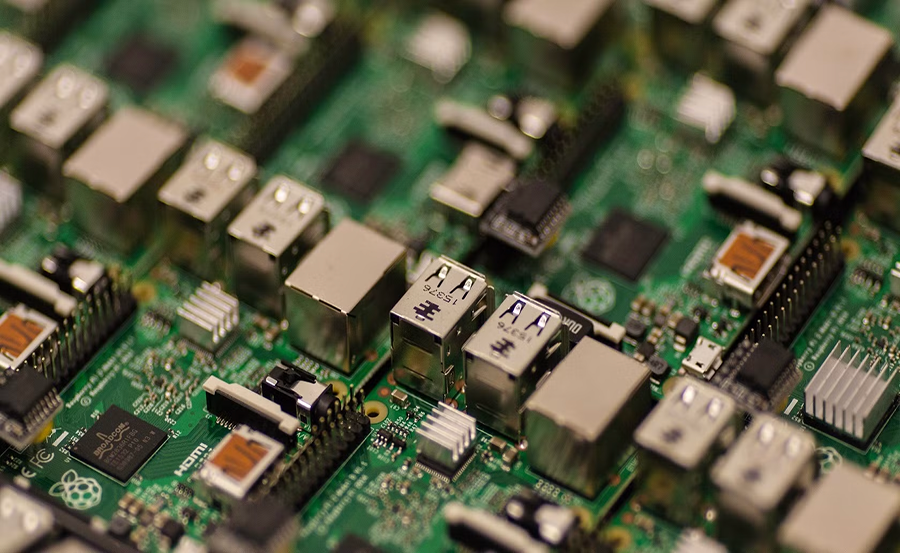Welcome to a journey where technology meets creativity! Imagine a world where your vision can materialize at the touch of a button. Raspberry Pi, the tiny yet powerful device, has revolutionized the way enthusiasts approach 3D printing. But why stop there? Entertain yourself while you create with the best IPTV service – Helix IPTV. Let’s dive into how you can harness Raspberry Pi for your 3D printing projects while also enjoying unmatched IPTV service.
Understanding Raspberry Pi: A Catalyst for 3D Printing
Raspberry Pi may appear to be just a small board; however, its capabilities transcend its size. As a microcomputer, it’s inexpensive, versatile, and highly effective for varied applications including 3D printing. Whether you are just stepping into this hobby or are a seasoned professional, Raspberry Pi offers flexibility and power that can enhance your projects significantly.
Why Raspberry Pi for 3D Printing?
Raspberry Pi has established itself as a favorite among tech enthusiasts and professionals alike, largely because of its adaptability. When integrated with 3D printers, it provides several advantages:
Insider’s Edge:
Get instant access to live TV, sports, movies, and more with Helix IPTV Subscription the best IPTV service on the market.
- Cost-Effective: With minimal investment, Raspberry Pi increases the accessibility of sophisticated 3D printing technology.
- Open Source Software: Supported by a vast community, users benefit from continuously improved software developments tailored for 3D printing needs.
- Remote Access and Monitoring: Whether via a smartphone or a laptop, monitor and control your 3D prints from anywhere.
Setup Essentials for Raspberry Pi
Before you jump into your first project, setting up the Raspberry Pi is crucial. Here’s a quick guide to ensure a smooth start:
Choosing the Right Model
For 3D printing, the Raspberry Pi 4 Model B is often recommended due to its robust features and improved processing power. However, the slightly older Raspberry Pi 3 can also suffice for most hobbyist applications.
Installing the Operating System
Raspberry Pi commonly utilizes the Raspbian OS, tailored for these devices. Installation is user-friendly and quick, providing a solid foundation for further setup.
Getting Started with 3D Printing Using Raspberry Pi
Once you have your Raspberry Pi set up, it’s time to explore how it complements 3D printing. This section will walk you through the integration of these technologies, making your creative visions a possible reality.
Connecting Your Raspberry Pi to the 3D Printer
Establish a connection between your Raspberry Pi and your 3D printer. Use an appropriate cable or establish a wireless setup for added convenience. Remember to configure the correct port settings within your controlling software.
Software Solutions – OctoPrint
OctoPrint is a popular software choice amongst makers. Compatible with Raspberry Pi, it comes with a myriad of features designed to streamline the 3D printing process, including real-time monitoring, an intuitive web interface, and an array of plugins to expand its capabilities.
- Web Interface: Control your printer seamlessly through a web browser.
- Real-Time Monitoring: Harness the power of webcams for live print feeds.
- Ready-to-Use Plugins: Extend functionalities like timelapse creation and detailed print analytics.
Configuring OctoPrint
Once installed, take the time to configure OctoPrint to match your specific needs. Ensure that your printer profiles are correctly set up and don’t forget to secure the interface to prevent unauthorized access.
Diving Deeper: Advanced Raspberry Pi 3D Printing Techniques
Now that you’re familiar with the basics, let’s explore some advanced applications. These techniques may require slightly more technical expertise but will make a difference in the quality and efficiency of your projects.
Automated Calibration
Constant calibration can be tedious. Automate this process with advanced scripts available in the OctoPrint community. Automating bed leveling ensures precision, leading to impeccable finish quality and less manual intervention.
Multi-Extruder Management
Handle complex printing tasks that involve multiple filament colors or materials using plugins designed for multi-extruder management. These plugins allow you to switch between different filaments mid-print seamlessly.
Maximizing Efficiency with Filament Sensors
Using Raspberry Pi, you can integrate filament sensors to pause your prints upon detecting unexpected filament absence. This minimizes waste and ensures continuity in your operations, a crucial factor for long prints.
Transform 3D Printing Pauses into Entertainment: Introducing Helix IPTV
As every maker knows, there are periods of waiting involved with 3D printing. Instead of watching your print progress bump to 10%, how about indulging in some high-quality IPTV entertainment? Helix IPTV offers the finest in international and USA channels, turning wait time into leisure time.
Why Choose Helix IPTV?
Helix IPTV stands out in the competitive IPTV market, offering:
- Extensive Channel Range: Access to premium USA channels as well as international programming seamlessly integrated.
- Cost-Effective Packages: Explore cheap IPTV options that do not compromise on quality or viewing experience.
- User Friendly Interface: A simple setup that allows for quick access and navigation.
Setting Up Helix IPTV
Getting started with Helix IPTV is as straightforward as setting up Raspberry Pi. Simply subscribe, download the app onto any smart device, and immerse yourself in endless entertainment.
The Technical Requirements
All you need is a stable internet connection and a compatible device, and you’re good to explore Helix’s colossal content library. Whether it’s live news, sports, or movies; all are just a click away!
Troubleshooting Common Issues When Using Raspberry Pi for 3D Printing
No technical journey is without its hiccups. If you encounter any speed bumps along the way, here’s how you can tackle common problems while integrating Raspberry Pi with 3D printing projects.
Printer Connectivity Problems
Begin troubleshooting by ensuring your connection cables or Wi-Fi networks are properly set. Additionally, double-check the port configurations within your controlling applications.
Software Hang-Ups
Should your software become unresponsive, a system reboot can often iron out glitches. Also, regularly updating your software can prevent many known issues from arising in the first place.
Heating Issues
Overheating can damage both Raspberry Pi and your 3D printer. It’s vital to ensure proper ventilation and regularly inspect your device’s temperature to prevent long-term damage.
Conclusion: The Perfect Blend of Technology and Entertainment
Embracing Raspberry Pi for your 3D printing projects has never been easier and more rewarding. The small device packs enough punch to transform your printing processes, providing an incredible return on investment for hobbyists and professionals alike. Add Helix IPTV to this mix and you not only innovate but also entertain in style. Happy printing and happy viewing!
Frequently Asked Questions

What is Raspberry Pi, and how does it enhance 3D printing?
Raspberry Pi is a microcomputer offering affordable and flexible solutions, optimizing the control and monitoring of 3D printing processes for an enhanced user experience.
What makes Helix IPTV the best IPTV option?
Helix IPTV offers an impressive range of international and USA-specific channels with personalized service packages, ensuring premium content at cost-effective prices.
How difficult is it to set up a Raspberry Pi with a 3D printer?
The setup is relatively straightforward, especially with resources like OctoPrint that facilitate a user-friendly approach to integrating Raspberry Pi with 3D printers.
Can I use Helix IPTV while operating my 3D printer with Raspberry Pi?
Absolutely! While your 3D printer works, you can enjoy Helix IPTV on multiple devices simultaneously, turning downtime into leisure time.
What do I need to get started with Helix IPTV?
Begin by subscribing to a Helix IPTV plan, then download the app onto any suitable device with an internet connection, and start enjoying your favorite content.
Are there any risks of overheating when using Raspberry Pi for 3D printing?
With appropriate ventilation and periodic temperature checks, overheating risks are minimal. Safe operation ensures longevity for both your Raspberry Pi and 3D printer.
Your First Steps with ProgTV: A Complete Guide

